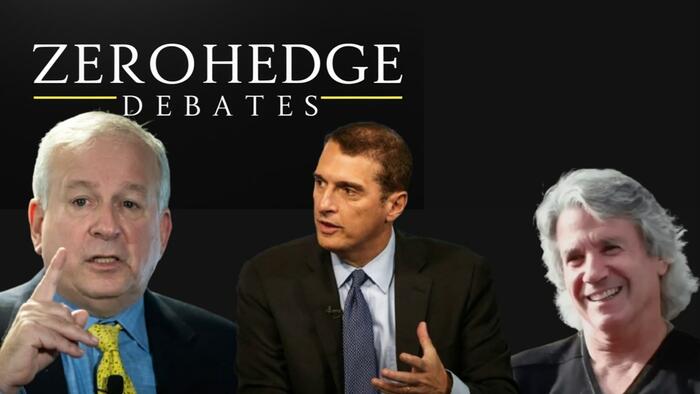In recent discussions surrounding U.S. Treasury Bonds, especially those yielding over 4% on the 1-year term, opinions are sharply divided. Historically viewed as a safe investment, these bonds are now garnering attention even from those skeptical about the dollar’s future. Financial experts are continuously weighing the potential risks and benefits of investing in these bonds amid fluctuating economic conditions. The allure of high yields is undeniable, particularly for investors seeking stability in uncertain times, but the question remains whether these bonds are a sound long-term investment or if they carry hidden risks.
The debate on this topic was highlighted in a premium-only discussion hosted by legendary short-seller Bill Fleckenstein. He brought together renowned bond bull David Rosenberg and macro researcher Jim Bianco to explore various perspectives on the viability of U.S. Treasury Bonds. Each participant contributed their insights based on market analysis, historical trends, and broader economic indicators. Such dialogues are crucial as they help demystify the complex nature of bond investments, particularly in the current climate marked by rising interest rates and potential inflationary pressures.
David Rosenberg, known for his bullish stance on bonds, argued that Treasury Bonds remain an attractive long-term investment. He emphasized the historical safety of these instruments, especially during times of economic downturn. Rosenberg pointed out that despite the allure of higher returns in equities, the inherent volatility carries significant risks that may not be suitable for all investors. His assertion is rooted in the belief that U.S. Treasuries can provide a reliable income stream while simultaneously offering a defensive position against market fluctuations, making them a cornerstone of a conservative investment strategy.
In contrast, Jim Bianco presented a more cautious perspective, suggesting that the current economic landscape could undermine the traditional safe-haven status of Treasury Bonds. He highlighted concerns regarding rising inflation and the potential for increased interest rates, which could erode bond values. Bianco’s analysis focused on the historical context where economic conditions shifted rapidly, leading to unfavorable outcomes for bondholders. He argued that investors should carefully consider their exposure to long-term bonds, as the dynamic nature of economic factors could lead to significant losses in a rising rate environment.
The debate was further enriched by discussions around the implications of government policies and fiscal dynamics on bond yields. The interplay between supply and demand for Treasuries, as well as the Federal Reserve’s actions, plays a critical role in determining the attractiveness of these investments. Both Fleckenstein and his guests explored how government interventions and geopolitical risks could impact Treasury performance, adding layers of complexity to what many perceive as straightforward fixed-income instruments. This underscores the importance of remaining vigilant and informed about macroeconomic trends when considering bond investments.
Ultimately, the consensus from the debate emphasized the necessity for a nuanced approach to investing in U.S. Treasury Bonds. While they offer a level of security that appeals to many investors, market participants should remain aware of the potential risks associated with long-term bond holdings, particularly in a rapidly changing economic environment. Balancing the benefits of yield with the dangers of rising interest rates and inflation will be critical for anyone considering these assets as a pivotal part of their investment strategy.
In conclusion, as the financial landscape evolves, U.S. Treasury Bonds present both opportunities and challenges. The captivating debate among experts like Rosenberg and Bianco highlights the need for investors to conduct thorough research and remain adaptable in their strategies. While bonds can serve as a foundational element of a diversified portfolio, their long-term viability hinges on an array of economic conditions, necessitating careful consideration by all investors.

